THE SAMURAI SWORD, A Handbook
John Yumoto
An essential entry level text that still continues to serve as a valuable point of
reference for all. Here is offered a broad survey that includes: history, an
abridged listing of relevant kanji, an overview of smiths, and a glossary of terms; with
examples well illustrated and accompanied by b&w photos.
191 pgs., 6 x 8½" hardcover $21.95 |
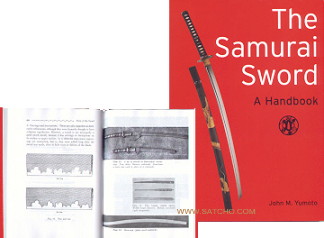 |
NIPPON-TO: THE JAPANESE SWORD
Inami Hakusui (1948)
This long out-of-print book was the first English language reference
written by a noted Japanese polisher/appraiser. Of note are an
assessment of five schools of swordmaking with contrast to shinto
and later blades, and Inami's account of various steps undertaken in
sword polishing. Well supported by b&w illustrations and photos. This is
a classic text acknowledged in the bibliographies of many later works
and belongs on the shelf of all students of the sword.
222 pages, 7½ x 10½" hardcover $135.00 |
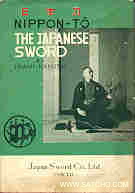 |
|
SAMURAI:
The Weapons & Spirit of the Japanese Warrior
Clive Sinclaire
A beautiful, large-sized work - the synthesis of over thirty years
study, Sinclaire presents the history of Japan's samurai class
accompanied by a remarkable range of arms, armor, and prints. This
ambitious work has raised the bar for historical survey; both the text
and its high quality color plates will be appreciated by the novice and
well-studied student alike: visually stunning while also demonstrating
the high degree of scholarship and connoisseurship the subject deserves
- a modern classic.
144 pages, 10¼ x 11½" soft cover $21.95 |
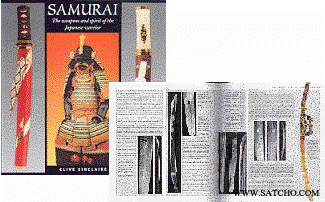 |
ARTS OF THE JAPANESE SWORD
B.W.Robinson (r. 1961)
An overview of Japanese swords and fittings, this is one of the early essential
reference books produced in English. Compared with Yumoto's The Samurai Sword,
here Robinson expands on the all-in-one handbook format by including far greater detail on
both specific schools of swordsmiths listed by province, and sword fittings.
Supported by 108 color and b&w photographic plates, also numerous charts and
illustrations.
228 pages, 6¼ x 10"
hardcover $120.00 |
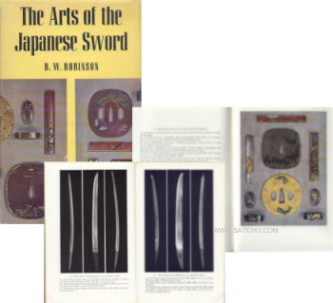 |
THE JAPANESE SWORD
Kanzan Sato
A well illustrated introduction to the appreciation and history of the Japanese Sword.
As an overview of 1,500 years of sword history, it includes: history, includes
various aspects of sword lore, forging techniques and problems of appraisal. The book's
centerpiece is a detailed examination of over a dozen important blades. 29 color
illustrations.
210 pages, 7½ x 103/8" hardcover $40.00 |
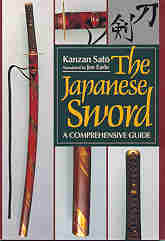 |
JAPANESE SWORDS
Nobuo Ogasawara (r.1970)
A little picture book on the Japanese sword. This broad survey includes swords and
fittings while also discussing the history of the art. Many important works are
shown. Numerous color and b&w photographs are detailed and a glossary follows.
128 pages, 4 x 5¾" soft cover $17.50 |
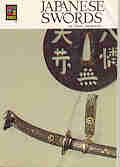 |
JAPANESE SWORD TERMS, and 400 named
blades
W.M.Hawley
A listing of over 1,100 sword related terms in both Romanji and kanji all defined in
English. Cross referenced alphabetically and by subject. A welcomed reference for all
students of the sword.
140 pages, 8½ x 11" spiral bound $35.00 |
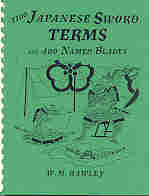 |
INTRODUCTION TO JAPANESE SWORDS
W.M.Hawley
A brief overview of the Japanese swords and related arts illustrating general
characteristics. Also includes a short article on tanegashima, Japanese matchlocks.
20 pages, 8½ x 11" soft cover $12.50 |
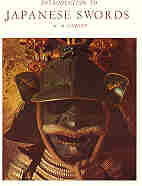 |
THE CRAFT OF THE
JAPANESE SWORD
Leon & Hiroko Kapp, and Yoshindo Yoshihara
Details the creation of the sword as the combined efforts of: the smith, polisher, habaki
and fittings maker, and saya maker. The contributions of each is detailed with step by
step photographs accompanying detailed text and many examples. In addition, comparisons of
koto and shinsaku blades are included with color, b&w photos, and many illustrations
throughout.
167 pages, 7½ x 10½" hardcover $45.00 |
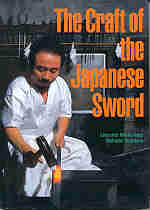 |
The Gokaden
As a system, the Gokaden offers a history of Japanese
swordmaking within a framework of five traditions. These traditions are identified by the
provinces from which major sword production was centered during the Koto, or old sword,
period; Yamashiro, Yamato, and Bizen were the first three, and were later followed by
Soshu and Mino. That sword production should have developed in these five areas was the
result of demand, as in the case of Yamashiro province with Kyoto, the imperial capitol,
necessitating a need for arms; or as the result of supply, as was the situation in Bizen
where raw material, water, climate, and transportation facilitated swordmaking. While each
region developed distinctive styles, there were simultaneous pressures and influences that
bring to question the isolation or independence of each tradition. The complexities
encountered in the study of the Japanese sword and its evolution necessitates a framework
on which to build. As a tool of study, tradition implies a certain imprecision of recall,
however, it affords entrance to a process that evolved over time. The Gokaden is the
entrance to the study of Nihon-to.
 |
THE
YAMASHIRO SCHOOL OF SWORDSMITHS
12 pages, 5½ x 8½" soft cover $4.95
THE YAMATO SCHOOL OF SWORDSMITHS
13 pages, 5½ x 8½" soft cover $4.95
THE BIZEN SCHOOL OF SWORDSMITHS
20 pages, 5½ x 8½" soft cover $5.95THE SOSHU SCHOOL OF SWORDSMITHS
12 pages, 5½ x 8½" soft cover $4.95
THE MINO SCHOOL OF SWORDSMITHS*
14 pages, 5½ x 8½" soft cover $4.95
* Look to
Mino-To (Cox, 1993) for
a comprehensive examination
of this school. |
Identifying swords to the five traditions is the classic first step of sword
study. Accordingly, the information contained in each of these five booklets is also
included in many of the introductory references listed above.
We would be happy to discuss your specific interests toward helping identify the texts
which can best meet your needs. Please feel free to call on us for any assistance. |
|

203 Main Street, #245
Flemington, NJ 08822
U.S.A. |
phone:
fax:
e-mail:
|
1 (908) 397-9283
1 (914) 206-3562
books@satcho.com
Home |
 |
Ordering Instructions
© Copyright SATCHO, 1999-2006.
All rights reserved. |
|
|
|
|
|
|